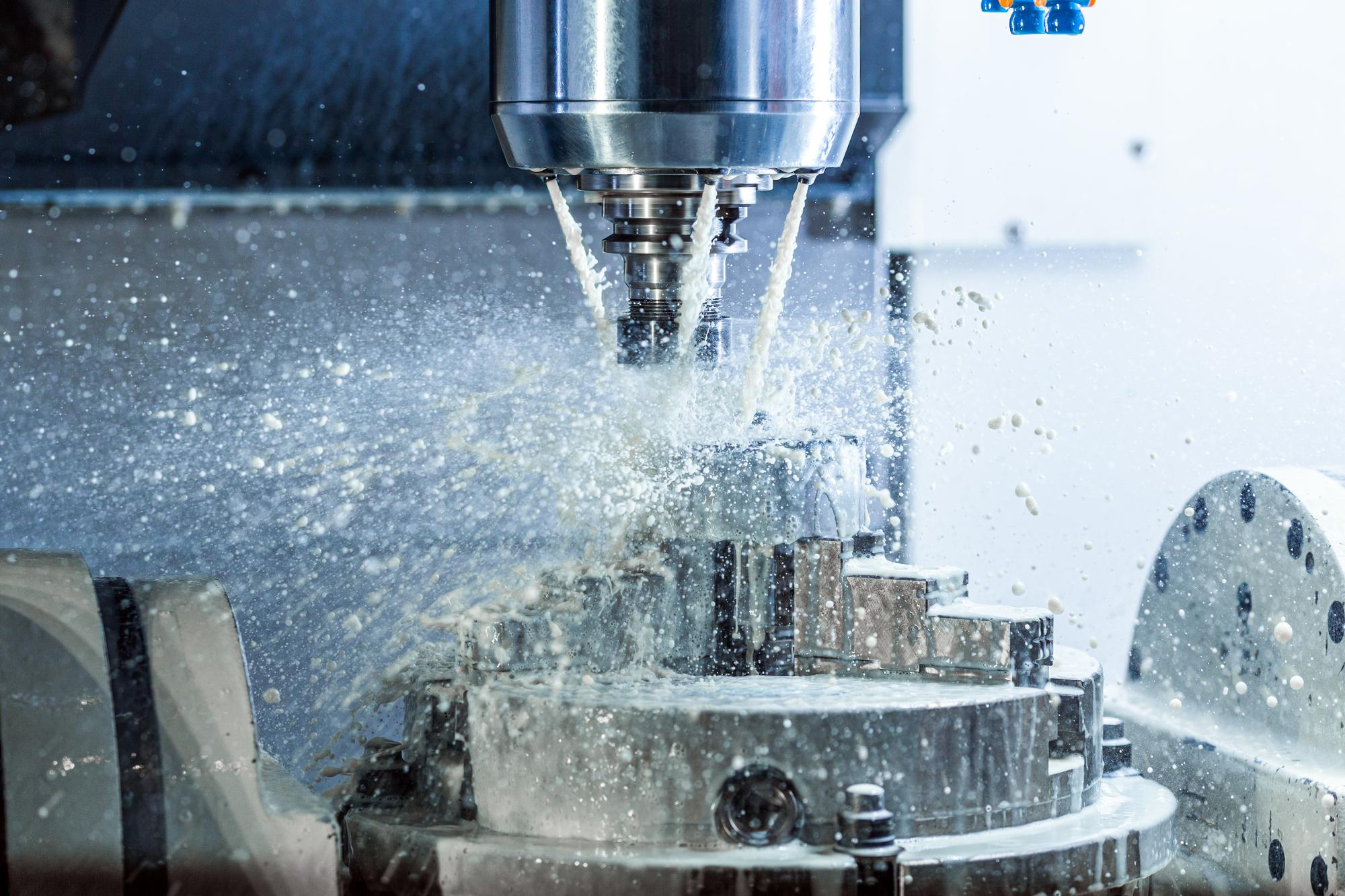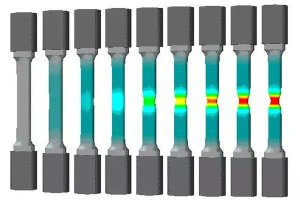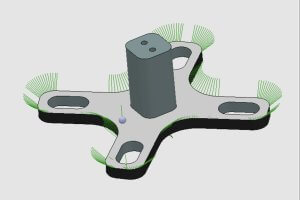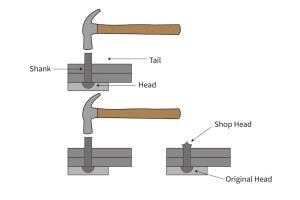To CNC machining, the choice of tool material is crucial, especially for high-speed cutting. TiC(N)-based hard alloys have emerged as a game-changer, offering a unique blend of properties that sit somewhere between traditional hard alloys and ceramics. These materials are transforming the way we approach high-speed machining, making processes faster, more efficient, and ultimately more cost-effective.
What Makes TiC(N)-Based Hard Alloys Special?
TiC(N)-based hard alloys are composed primarily of titanium carbide (TiC) and nickel-molybdenum (Ni-Mo) alloys. The addition of nickel as a binder enhances the alloy’s strength, while molybdenum improves its wettability with titanium. These alloys exhibit several remarkable characteristics:
- Hardness: With a hardness range of HRA 90-94, TiC(N)-based alloys are nearly as hard as ceramics, making them incredibly wear-resistant.
- Wear Resistance: These alloys have excellent resistance to crater wear and notch wear, thanks to their low affinity with the workpiece material and low friction coefficient.
- Heat Resistance: They maintain their strength and hardness at high temperatures, which is crucial for high-speed cutting.
- Chemical Stability: TiC(N)-based alloys are chemically stable, preventing unwanted reactions with the workpiece material.
High-Speed Cutting Advantages
The key advantage of using TiC(N)-based hard alloys in CNC machining is their ability to handle high-speed cutting. When used in precision turning, for example, the cutting speed can be increased by 20-50% compared to conventional hard alloys. This not only speeds up the machining process but also enhances the quality of the finished product.
Japan leads the world in the development and application of TiC(N)-based hard alloys, with these materials accounting for 28% of their total production of hard alloys and ceramic tools.
Types and Compositions of TiC(N)-Based Hard Alloys
TiC(N)-based hard alloys come in various compositions, tailored for specific machining needs:
- TiC-Ni-Mo Alloys: These are the standard composition, providing a good balance of hardness and toughness.
- Alloys with Added Carbides: Adding carbides like WC (tungsten carbide) or TaC (tantalum carbide) enhances toughness, elastic modulus, and resistance to plastic deformation, making the tools suitable for a broader range of applications.
- TiN-Based Alloys: TiN (titanium nitride) offers better thermal stability and conductivity, reducing friction and adhesive wear.
Here’s a comparison of the physical and mechanical properties of different TiC(N)-based hard alloys:
| Classification | Density (g/cm³) | Hardness (HRA) | Bending Strength (MPa) | Elastic Modulus (GPa) |
|---|---|---|---|---|
| TiC-Ni-Mo | 5.2 | 93 | 1400 | 410 |
| Toughened TiC-Ni-Mo | 6.3 | 92 | 1500 | 450 |
| TiCN-based | 7.2 | 92.5 | 1500 | 480 |
Coated Tools: Enhancing Performance
One of the significant advancements in CNC machining tools is the use of coated tools. By applying a hard, wear-resistant coating to a tough substrate, manufacturers can significantly enhance tool performance. These coatings, often made from refractory compounds like TiC, TiN, and Al₂O₃, combine high hardness with excellent wear resistance.
Common Coatings and Their Benefits
- TiC (Titanium Carbide): Provides high hardness and excellent resistance to flank wear and crater wear.
- TiN (Titanium Nitride): Offers lower hardness than TiC but has a lower friction coefficient, reducing adhesive wear.
- TiCN (Titanium Carbonitride): Combines the properties of TiC and TiN, providing high hardness and low friction.
- Al₂O₃ (Aluminum Oxide): Maintains chemical and thermal stability at high temperatures, improving tool life.
Modern coating techniques such as Chemical Vapor Deposition (CVD) and Physical Vapor Deposition (PVD) have made it possible to apply these coatings efficiently. CVD is typically used for carbide tools, while PVD is used for high-speed steel tools.
Innovative Coatings for Enhanced Performance
Recent developments in coating technology have led to the creation of multi-layer and nano-coatings. These advanced coatings combine multiple layers of different materials, enhancing both hardness and toughness. For example, TiAlN (titanium aluminum nitride) coatings oxidize during cutting to form a protective aluminum oxide layer, which enhances resistance to oxidation and diffusion wear.
Data Comparison: TiC(N)-Based vs. Coated Tools
Here’s how TiC(N)-based hard alloys compare to traditional coated tools in high-speed cutting:
| Tool Type | Hardness (HRA) | Wear Resistance | Cutting Speed Increase (%) | Temperature Stability | Chemical Stability | Cost Efficiency |
|---|---|---|---|---|---|---|
| TiC(N)-Based Hard Alloys | 90-94 | High | 20-50 | High | High | Moderate |
| TiC-Coated Tools | 85-92 | High | 10-30 | Moderate | High | High |
| TiN-Coated Tools | 80-90 | Moderate | 15-35 | High | High | High |
| TiCN-Coated Tools | 88-92 | Very High | 20-40 | Very High | Very High | High |
The Future of CNC Machining with TiC(N)-Based Alloys
The continuous development of TiC(N)-based hard alloys and innovative coatings promises even greater advancements in CNC machining. With improved properties and performance, these materials are setting new benchmarks for cutting speed, tool life, and machining efficiency. As the industry evolves, we can expect to see even more sophisticated alloys and coatings, further enhancing the capabilities of CNC machining parts.
Other Articles You Might Enjoy
- Innovations in CNC Machining: High-Temperature Alloys vs. Traditional Materials
CNC Machining: Its Techniques and Significance in Material Selection Computer Numerical Control (CNC) machining, a fabrication method extensively employed within the engineering realm, manipulates pre-programmed computer software to regulate factory…
- Nimonic Alloys in CNC Machining: Enhancing Performance in High-Temperature Applications
Introduction to CNC Machining and Nimonic Alloys CNC machining is a prevalent manufacturing process that leverages computerized controls to operate, manipulate, and control machine shop tools. This high-tech method negates…
- Material Considerations for High-Speed CNC Machining: Aluminum Alloys vs. Titanium
Introduction: High-Speed CNC Machining and Material Considerations In the world of modern manufacturing, High-Speed CNC (Computer Numerical Control) machining plays a pivotal role in producing precision parts at fast turnaround…
- Nickel Alloys in CNC Machining
Nickel alloys are widely used in CNC machining due to their exceptional mechanical properties and resistance to extreme environments. These alloys are highly valued in industries such as aerospace, automotive,…
- High-Speed Machining Techniques in CNC Machining Parts: Secrets to Enhanced Efficiency and Quality
High-speed machining (HSM) is an intriguing and evolving field within CNC machining. The term "high-speed" is relative and varies depending on the machining method, workpiece material, and tool material. Defining…
- Precision CNC Machining of Steel: High-Volume Production
Precision CNC Machining and High-Volume Production As an integral part of modern manufacturing processes, Precision Computer Numerical Control (CNC) machining brings about unmatched accuracy and consistency in the production of…









